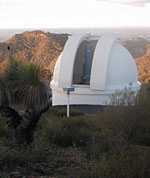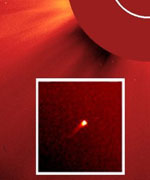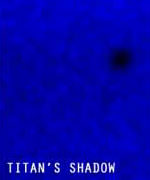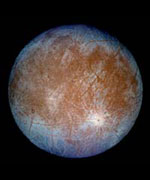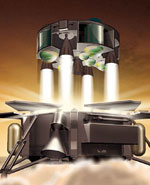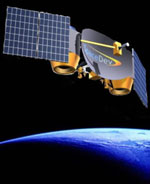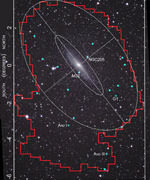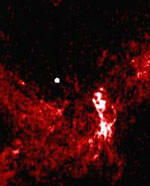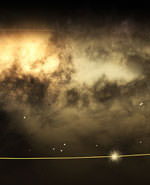
Image credit: ESO
Home is the place we know best. But not so in the Milky Way – the galaxy in which we live. Our knowledge of our nearest stellar neighbours has long been seriously incomplete and – worse – skewed by prejudice concerning their behaviour. Stars were generally selected for observation because they were thought to be “interesting” in some sense, not because they were typical. This has resulted in a biased view of the evolution of our Galaxy.
The Milky Way started out just after the Big Bang as one or more diffuse blobs of gas of almost pure hydrogen and helium. With time, it assembled into the flattened spiral galaxy which we inhabit today. Meanwhile, generation after generation of stars were formed, including our Sun some 4,700 million years ago.
But how did all this really happen? Was it a rapid process? Was it violent or calm? When were all the heavier elements formed? How did the Milky Way change its composition and shape with time? Answers to these and many other questions are ‘hot’ topics for the astronomers who study the birth and evolution of the Milky Way and other galaxies.
Now the rich results of a 15 year-long marathon survey by a Danish-Swiss-Swedish research team [2] are providing some of the answers.
1,001 nights at the telescopes
The team spent more than 1,000 observing nights over 15 years at the Danish 1.5-m telescope of the European Southern Observatory at La Silla (Chile) and at the Swiss 1-m telescope of the Observatoire de Haute-Provence (France). Additional observations were made at the Harvard-Smithsonian Center for Astrophysics in the USA. A total of more than 14,000 solar-like stars (so-called F- and G-type stars) were observed at an average of four times each – a total of no less than 63,000 individual spectroscopic observations!
This now complete census of neighbourhood stars provides distances, ages, chemical analysis, space velocities and orbits in the general rotation of the Milky Way. It also identifies those stars (about 1/3 of them all) which the astronomers found to be double or multiple.
This very complete data set for the stars in the solar neighbourhood will provide food for thought by astronomers for years to come.
A dream come true
These observations provide the long-sought missing pieces of the puzzle to get a clear overview of the solar neighbourhood. They effectively mark the conclusion of a project started more than twenty years ago..
In fact, this work marks the fulfilment of an old dream by Danish astronomer Bengt Str?mgren (1908-1987), who pioneered the study of the history of the Milky Way through systematic studies of its stars. Already in the 1950’s he designed a special system of colour measurements to determine the chemical composition and ages of many stars very efficiently. And the Danish 50-cm and 1.5-m telescopes at the ESO La Silla Observatory (Chile) were constructed to make such projects possible.
Another Danish astronomer, Erik Heyn Olsen made the first step in the 1980’s by measuring the flux (light intensity) in several wavebands (in the “Str?mgren photometric system”) of 30,000 A, F and G stars over the whole sky to a fixed brightness limit. Next, ESA’s Hipparcos satellite determined precise distances and velocities in the plane of the sky for these and many other stars.
The missing link was the motions along the line of sight (the so-called radial velocities). They were then measured by the present team from the Doppler shift of spectral lines of the stars (the same technique that is used to detect planets around other stars), using the specialized CORAVEL instrument.
Stellar orbits in the Milky Way
With the velocity information completed, the astronomers can now compute how the stars have wandered around in the Galaxy in the past, and where they will go in the future, cf. PR Video Clip 04/04.
Birgitta Nordstr?m, leader of the team, explains: “For the first time we have a complete set of observed stars that is a fair representation of the stellar population in the Milky Way disc in general. It is large enough for a proper statistical analysis and also has complete velocity and binary star information. We have just started the analysis of this dataset ourselves, but we know that our colleagues worldwide will rush to join in the interpretation of this treasure trove of information.”
The team’s initial analysis indicates that objects like molecular clouds, spiral arms, black holes, or maybe a central bar in the Galaxy, have stirred up the motion of the stars throughout the entire history of the Milky Way disc.
This in turn reveals that the evolution of the Milky Way was far more complex and chaotic than traditional, simplified models have long so far assumed. Supernova explosions, galaxy collisions, and infall of huge gas clouds have made the Milky Way a very lively place indeed!
Original Source: ESO News Release

